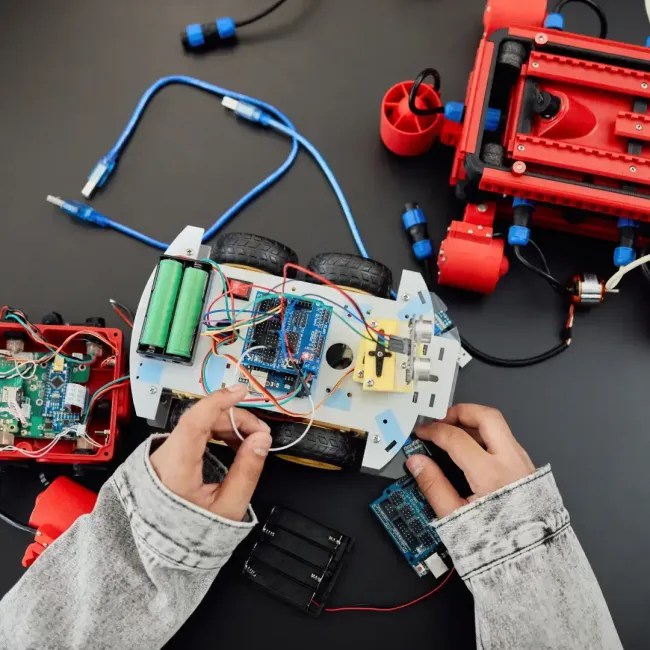It's important to understand key terms that are used when talking about robotic technology and the software that powers it, regardless of the application, because it is with continued research and innovation that humans will develop the next generations of robotic technology.
Actuator: A motor that receives programming signals and then decodes them into mechanical movement that is carried out by a robot
Aerobot: This is a type of robot that is chiefly defined by its ability to fly independently.
Android: A robot designed to look like a human
Automaton: A mechanical device that is programmed to follow a specific set of instructions
Autonomous Vehicle: A vehicle that operates without human control. The vehicle most commonly functions through an autopilot system.
Bionics: The use of organically occurring processes or biological systems to develop and design new robots
Central Processing Unit (CPU): The "brain" of a robot or of any type of computer. It is designed to process pre-programmed and command inputs.
Cobots: These are robots designed to work alongside and with humans.
Controller System: A computer within a robot that stores data, carries out programs, and controls the operations of the robot
Cyborg: Short for "cybernetic organism," a cyborg is any being that has both biological and artificial parts.
End Effector: A generalized term for the specific tool or attachment that allows a robot to complete the task that it was designed and programmed to do
Feedback Sensor: A mechanism designed to receive environmental data, which is then delivered to the central processing unit. The CPU then uses that data to fine-tune the robot's motions.
Haptic: Related to the sense of touch. In robots, this term specifically refers to a robot's interactions with objects that use tactile sensors.
Hexapod: A robot with six legs, most often inspired by organic insects
Humanoid: A robot designed to resemble the human form but still look like a robot. Humanoids are typically created to do tasks traditionally done only by humans.
Industrial Robot: A robotic manipulator created to carry out specialized tasks and commands and operate within the industrial chain of fabrication
Input Device: A device that allows humans to interface with robots. This is most frequently used for the purposes of programming future actions or taking direct control over the robot's movement.
Intelligent Robot: This is a robot that adapts its function based on sensory input without the need for direct human intervention. Intelligent robots usually make use of artificial intelligence (AI).
Nanobot: An autonomous device constructed of molecular components and operating at the nanoscale.
Payload: The amount of weight that a robot can lift or carry
Powered Exoskeleton: A wearable machine that increases the strength and endurance of the human body
Prosthetic: A programmable robotic device designed with the purpose of replacing a missing organic body part
Robot: A machine that can carry out tasks independently, without direct human control or action
Sensor: An instrument used by a robot to gather environmental data about the conditions it experiences, which the robot uses to guide its actions
Additional Resources
- A Guide to Robots
- Robotics: A Brief History
- Parts of a Robot
- Five Defining Qualities of Robots
- The Role of AI in Robotics
- Different Types of Robots
- An Introduction to Robots
- A Collection of Robots and Detailed Information About Each
- An Overview of Robotics Technology
- What Is a Robot, and How are They Used by NASA?



